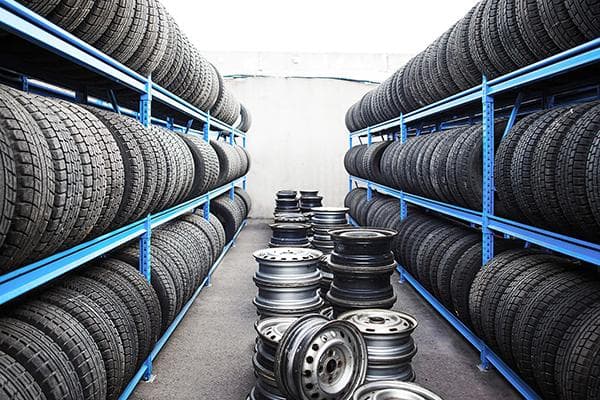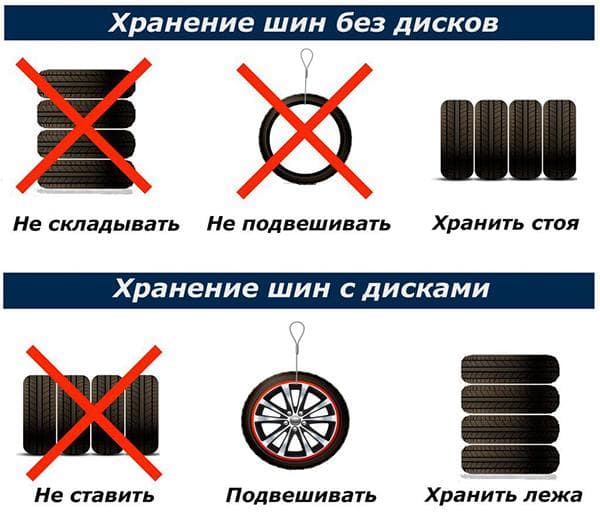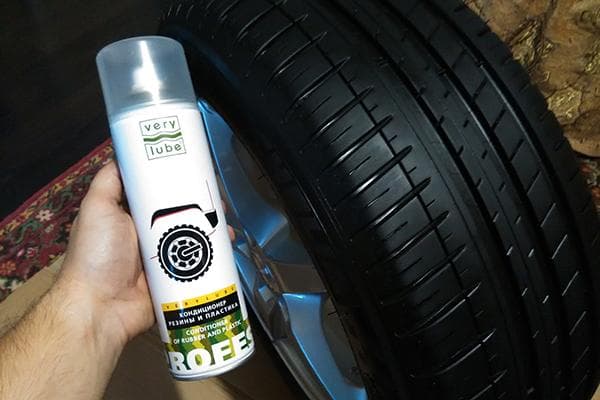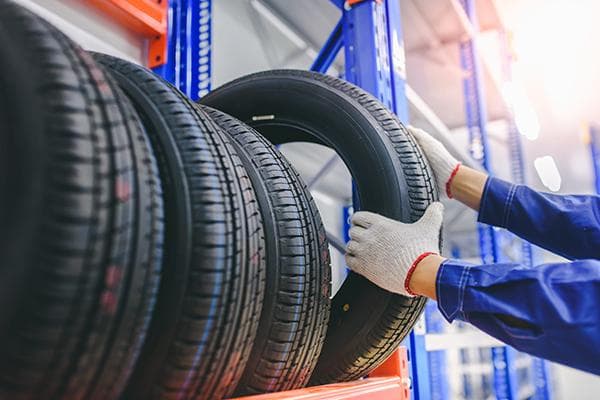How to store car tires without rims: advice from auto mechanics
Every driver should be able to properly store tires without rims between seasons. Without following storage rules, tires can become completely unusable within 2–3 months.
The issues of storing automobile tires are covered in a special document: GOST R. 54266-2010. It recommends storing tires without rims in an upright position at temperatures between -30°C and +35°C. Let's figure out why such a regime is needed and what other recommendations GOST contains.

What conditions are needed to store tires?
In addition to the specified temperature range, it is necessary to ensure a stable microclimate in the room where the tires are stored. Sudden changes in temperature, even within the permissible range, can lead to aging of rubber: disruption of the stability of the elastomer, deformation of tires, the appearance of microcracks and other defects.
If a heating device is installed in the room (no matter electric or steam), the distance from the heater to the rack on which the tires are located must be more than 1 m.
There are several other factors that cause rubber to deteriorate. The main reasons are indicated in the table:
| Factor | Mechanism of action |
|---|---|
| Solar ultraviolet | Under the influence of this part of the spectrum, the elastomer quickly “ages”, so stored tires should not be exposed to direct sunlight. |
| Chemically aggressive substances | Petroleum products (gasoline, diesel fuel, lubricating oils) can dissolve rubber components.Solutions of alkalis, acids, and many industrial solvents are also dangerous. |
| Humidity of air and surfaces | Excess moisture in the air or excessive dryness disrupts the normal structure of the elastomer. In excessively dry air, rubber can crack, and humidity provokes the development of fungi. Optimal air humidity is from 50% to 60%. |
It is also extremely important to avoid deformation of the tires. Choosing the right storage position will help with this.
In what position should tires be stored without rims?
When storing tires in a garage or on a balcony, it is better to use a special rack that will allow you to place them in a vertical position in a row. You can make such a rack from pipes and old wooden pallets. It is ideal if the shelves have a concave surface: this will distribute the pressure along the rim.
Tires stored on flat shelves should be rotated every 40–50 days. This will help avoid deformation.
It is IMPOSSIBLE to store tires without rims in the following positions:
- On suspensions (hooks, cables, pipes). Gravity will stretch the tire, giving it an oval shape. It will no longer be possible to put it on the rim at the beginning of the season.
- In horizontal stacks. Under the weight of the tires lying below, the lowest one will begin to be compressed and deformed.
For ease of storage, you can purchase a ready-made rack (floor-mounted or wall-mounted): online stores have a large selection of such designs. Experienced drivers have also come up with many original variations.
Another option is to take your tires to an authorized dealer of a large company for storage. We offer a useful video that discusses all these options:
What are the dangers of improper storage?
Mistakes when storing tires can cause irreparable damage to them.
Here are some consequences of improper storage of summer tires in winter:
- Tire bending, loss of correct geometry. Due to the loss of the correct shape, the tire cannot be placed on the rim. If you pull such a tire by force, it can prevent the tube from inflating.
- Reducing the contact patch of the tread on the road. This occurs when tires are compressed when stored in a stack. Due to deformation, the surface covered with the tread becomes convex rather than flat. The contact patch of the road decreases, which leads to a loss of vehicle stability on the road.
- Microcracks in rubber due to aging of the elastomer.
All these consequences can ruin new tires in one season. Therefore, the issue of storage must be treated as responsibly as possible.
Preparing tires for storage
Before storing tires removed from the rims, it is necessary to carry out preparatory treatment:
- Dirt and road chemicals are thoroughly washed off the surface.
- Small pebbles, dried leaves and other debris need to be removed from the tread.
- The final stage is thoroughly drying the surface.
For better safety, tires are lubricated with protective compounds. Silicone-based lubricants prevent the elastomer from drying out and cracking.
In conclusion, we will talk about the intricacies of storing winter tires in the summer. For convenience, we present the material in question-answer form.
Proper care of tires extends their service life and saves money on purchasing a new set of tires. It’s worth working hard for such a result, isn’t it?


